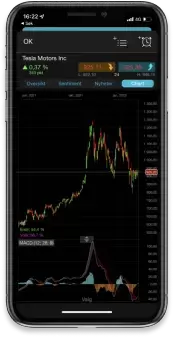It was another uneventful day in the markets yesterday as fresh news stories were thin on the ground.
The same old headlines about vaccines being distributed and optimism with respect to President Biden getting his $1.9 trillion stimulus plan approved in the next few weeks continued to be the main focus of traders’ attention. Both topics are of major importance but neither is likely to see any serious progress anytime soon. The fact that new variants of Covid-19 have emerged has caused a little concern in relation to tackling the crisis but AstraZeneca has already announced that it will develop unique drugs for the different strains.
Last week it was announced that Democrats introduced a measure to try and implement President Biden’s $1.9 trillion spending plan without gaining backing from the opposition, the Republicans. It has been the overriding story of the week and it is likely to linger too as the process could take weeks. Global stocks have been helped by the possibility of additional spending, in particular, US equities. The S&P 500 finished slightly higher last night.
Monetary policy is one of the two major tools that can be used to potentially trigger economic activity. On Wednesday, the Fed’s boss, Jerome Powell, re-stated his commitment to keeping a very loose policy in an effort to help steer the economy through the current situation. Mr Powell confirmed that stimulus will not be withdrawn until the US economy is out of the woods. The central banker said the actual unemployment rate is, in reality, is closer to 10% and that it is a long way from full employment. Traders took the update as a sign that policy will remain on hold for some time. That has underpinned stock markets.
Several stock markets in Asia are closed as countries celebrate the Lunar New Year. Equities in Japan and Australia are in the red. The Australian state of Victoria will enter a five day lockdown in a bid to curb the spread of the coronavirus. Stock markets in Europe are set to open a little lower.
The US dollar index has been in decline for the past week. Its negative move began following the downbeat US non-farm payrolls report. Mr Powell’s remarks about maintaining the current monetary policy didn’t help. Yesterday’s jobless claims reading was disappointing on two counts, firstly, the reading was 793,000, missing the 757,000 forecast, secondly, the prior update was revised up from 779,000 to 812,000. The jobs data backs up Powell’s stance with respect to keeping policy on hold.
The CMC GPB Index hit an 11 month high on Wednesday. Sterling benefitted from last week’s Bank of England meeting whereby it was suggested that negative interest rates will not be introduced in the few next months, or potentially at all. Even though the near-term outlook is bleak because of the lockdowns, the BoE is banking on a successful vaccine rollout to bring out a robust economic recovery later in the year.
Today’s UK growth reading will be in focus as it might influence BoE policy. The preliminary reading of fourth quarter GDP will be published at 7am (UK time), economists are expecting to see 0.5% on a quarterly basis, which would be a big fall from the 16% growth registered in the third quarter. Services account for approximately 70% of the UK’s economic output. The services PMI levels in October, November and December were 51.4, 47.6 and 49.4 respectively. A reading below 50.0 means negative growth. It is clear the tougher restrictions that were introduced from November onwards dented the all-important industry. Given the uncertainty that existed in relation to the UK-EU trading relationship at the back end of 2020, there could have been stockpiling of goods.
British bank’s lending margins are being squeezed by the low interest rate environment, so the BoE is unlikely to rush into cutting rates below zero. Even if today’s growth rate is negative, it doesn’t necessarily mean that sub-zero rates will be a done deal. Sterling has been elevated lately, so a not-hot reading could prompt a fall in the pound.
Bitcoin traded above $48,000 last night, setting a new all-time high. Bank of New York Mellon announced yesterday that it would provide integrated services for digital assets. Earlier in the week, MasterCard revealed they plan to provide custodian services for cryptocurrencies. It appears the digit currency is slowly but surely becoming more mainstream.
Brent crude oil slipped overnight as OPEC cautioned that demand will dip due as lockdowns will curtail economic activity. In addition to that, IEA commented the oil market is still oversupplied.
Several other UK reports will also be announced at 7am (UK time). The services, industrial output, manufacturing output and construction output readings for December will be posted, and the consensus estimate is 1%, 0.5%, 0.6% and 0.5% respectively.
The preliminary reading of the University of Michigan consumer sentiment update is anticipated to tick up from 79 to 80.8 in February. A healthy level of consumerism is needed to ensure the US economic recovery continues.
EUR/USD – last Friday’s candle has the potential to be a bullish engulfing and if it moves higher from here, it could target the 1.2200 zone. Beyond that, it could retest 1.2349. A move below 1.1952, might bring 1.1800 into play.
GBP/USD – since late September it has been in an uptrend, it hit a 33 month high recently. If the positive move continues, it could target 1.4000. A pullback might find support at 1.3585, the 50-day moving average.
EUR/GBP – has been in a downtrend since mid-December and further losses might target 0.8670. A rally from here could see it hit 0.8996, the 200-day moving average.
USD/JPY – has been moving lower since Friday, a break below 104.43, the 100-day moving average, should put 103.98, 50-day moving average on the radar. If the wider uptrend continues, it might hit 106 or 107.
Disclaimer: CMC Markets is an execution-only service provider. The material (whether or not it states any opinions) is for general information purposes only, and does not take into account your personal circumstances or objectives. Nothing in this material is (or should be considered to be) financial, investment or other advice on which reliance should be placed. No opinion given in the material constitutes a recommendation by CMC Markets or the author that any particular investment, security, transaction or investment strategy is suitable for any specific person. The material has not been prepared in accordance with legal requirements designed to promote the independence of investment research. Although we are not specifically prevented from dealing before providing this material, we do not seek to take advantage of the material prior to its dissemination.







